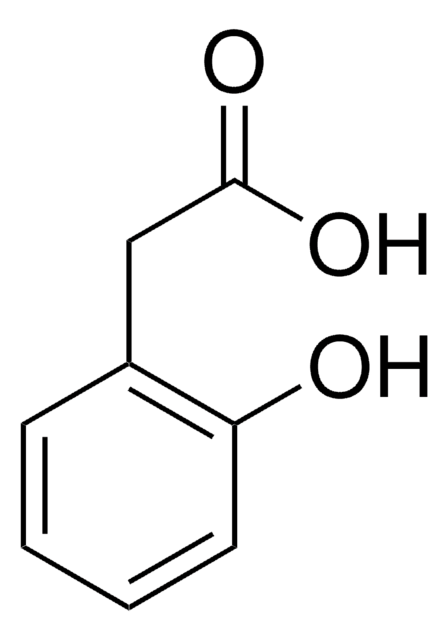H52406
3-(4-Hydroxyphenyl)propionic acid
98%
Synonym(s):
3-(p-Hydroxyphenyl)propionic acid, Phloretic acid
Sign Into View Organizational & Contract Pricing
All Photos(3)
About This Item
Linear Formula:
HOC6H4CH2CH2CO2H
CAS Number:
Molecular Weight:
166.17
Beilstein:
2209841
EC Number:
MDL number:
UNSPSC Code:
12352100
PubChem Substance ID:
NACRES:
NA.22
Recommended Products
Assay
98%
mp
129-131 °C (lit.)
fluorescence
λex 320 nm; λem 404 nm (buffer, pH 8.6)
SMILES string
OC(=O)CCc1ccc(O)cc1
InChI
1S/C9H10O3/c10-8-4-1-7(2-5-8)3-6-9(11)12/h1-2,4-5,10H,3,6H2,(H,11,12)
InChI key
NMHMNPHRMNGLLB-UHFFFAOYSA-N
Related Categories
Application
3-(4-Hydroxyphenyl)propionic acid can be used:
- To derive hydrogel based on chitosan, gelatin or poly(ethylene glycol).
- To synthesize novel symmetric and asymmetric bolaamphiphiles.
- As an acyl donor for the enzymatic synthesis of sugar alcohol esters.
Storage Class Code
11 - Combustible Solids
WGK
WGK 3
Flash Point(F)
Not applicable
Flash Point(C)
Not applicable
Personal Protective Equipment
dust mask type N95 (US), Eyeshields, Gloves
Certificates of Analysis (COA)
Search for Certificates of Analysis (COA) by entering the products Lot/Batch Number. Lot and Batch Numbers can be found on a product’s label following the words ‘Lot’ or ‘Batch’.
Already Own This Product?
Find documentation for the products that you have recently purchased in the Document Library.
Customers Also Viewed
Biocatalytic acylation of sugar alcohols by 3-(4-hydroxyphenyl) propionic acid.
Croitoru R, et al.
Process Biochemistry (Oxford, United Kingdom), 47(12), 1894-1902 (2012)
Efficient syntheses of bolaform surfactants from L-rhamnose and/or 3-(4-hydroxyphenyl) propionic acid.
Akong F O and Bouquillon S
Green Chemistry, 17(6), 3290-3300 (2015)
Eliana Capecchi et al.
Nanomaterials (Basel, Switzerland), 8(6) (2018-06-20)
Sustainable catalysts for the oxidation of phenol derivatives under environmentally friendly conditions were prepared by the functionalization of lignin nanoparticles with tyrosinase. Lignin, the most abundant polyphenol in nature, is the main byproduct in the pulp and paper manufacturing industry
Enhanced tissue adhesiveness of injectable gelatin hydrogels through dual catalytic activity of horseradish peroxidase.
Hoang T T T, et al.
Biopolymers, 109(1), e23077-e23077 (2018)
Tailorable cell culture platforms from enzymatically cross-linked multifunctional poly (ethylene glycol)-based hydrogels.
Menzies D J, et al.
Biomacromolecules, 14(2), 413-423 (2013)
Our team of scientists has experience in all areas of research including Life Science, Material Science, Chemical Synthesis, Chromatography, Analytical and many others.
Contact Technical Service









